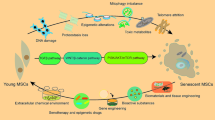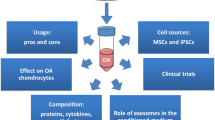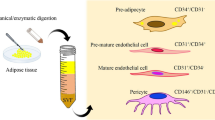Abstract
Adipose-derived stem cells (ASCs) possess multipotent differentiation capabilities, including the ability to repair and regenerate injured tissues. Recent studies have reported that ASCs have effects on fibroblasts that are related to wound healing. On the other hand, keloid is a result of pathologic wound healing, and keloid fibroblasts are known to have higher growth potential and an abnormal balance between proliferation and apoptosis. This study aimed to explore the paracrine effects of ASCs on normal fibroblasts (NF) and keloid fibroblasts (KF). NF and KF were cultured alone and in combination with ASCs using a trans-well cell-contact-independent cell culture system. Cell morphology was observed, cell proliferation was assessed using a CCK-8 kit, and apoptosis was assessed by live-dead-cell staining on days 1, 3, and 7. Western blot analysis at 24 hours after culture was used to investigate the production of type 1 collagen and alphasmooth muscle actin (α-SMA). Co-culture with ASCs resulted in increased proliferation of both NF and KF. In the co-culture with ASCs, collagen production decreased and expression of α-SMA increased in both the NF and KF. Comparison between the four groups revealed a significant difference in the expression of both type I collagen and α-SMA (p=0.016 and 0.022; Kruskal-Wallis test). Our findings are different from previous studies that used ASCs for normal dermal fibroblast and normal wound healing. However, considering pathologic mechanisms of keloid, ASCs may have the different effect on keloid fibroblasts, which could be another effect of ASCs modulating keloid during healing process.
Similar content being viewed by others
References
Zuk PA, Zhu M, Mizuno H, Huang J, Futrell JW, Katz AJ, et al. Multilineage cells from human adipose tissue: implications for cell-based therapies. Tissue Eng 2001;7:211–228.
Zuk PA, Zhu M, Ashjian P, De Ugarte DA, Huang JI, Mizuno H, et al. Human adipose tissue is a source of multipotent stem cells. Mol Biol Cell 2002;13:4279–4295.
Lee BJ, Wang SG, Lee JC, Jung JS, Bae YC, Jeong HJ, et al. The prevention of vocal fold scarring using autologous adipose tissue-derived stromal cells. Cells Tissues Organs 2006;184:198–204.
Kim CG, Lee JJ, Jung DY, Jeon J, Heo HS, Kang HC, et al. Profiling of differentially expressed genes in human stem cells by cDNA microarray. Mol Cells 2006;21:343–355.
Lee HK, Lee HJ, Lee HB, Khang GS, Kim HS, Lee IW, et al. Immunesuppressive effect of adipose derived stromal cell. Tissue Eng Regen Med 2005;2:383–387.
Le Pillouer-Prost A. Fibroblasts: what’s new in cellular biology? J Cosmet Laser Ther 2003;5:232–238.
Gosain A, DiPietro LA. Aging and wound healing. World J Surg 2004;28: 321–326.
Halim AS, Emami A, Salahshourifar I, Kannan TP. Keloid scarring: understanding the genetic basis, advances, and prospects. Arch Plast Surg 2012;39:184–189.
Hsu YC, Wang LF, Chien YW, Lee WR. Induction of TIMP-1 and HSP47 synthesis in primary keloid fibroblasts by exogenous nitric oxide. J Dermatol Sci 2007;45:37–44.
Tuan TL, Wu H, Huang EY, Chong SS, Laug W, Messadi D, et al. Increased plasminogen activator inhibitor-1 in keloid fibroblasts may account for their elevated collagen accumulation in fibrin gel cultures. Am J Pathol 2003;162:1579–1589.
Luo S, Benathan M, Raffoul W, Panizzon RG, Egloff DV. Abnormal balance between proliferation and apoptotic cell death in fibroblasts derived from keloid lesions. Plast Reconstr Surg 2001;107:87–96.
Al-Attar A, Mess S, Thomassen JM, Kauffman CL, Davison SP. Keloid pathogenesis and treatment. Plast Reconstr Surg 2006;117:286–300.
He S, Liu X, Yang Y, Huang W, Xu S, Yang S, et al. Mechanisms of transforming growth factor beta(1)/Smad signalling mediated by mitogen-activated protein kinase pathways in keloid fibroblasts. Br J Dermatol 2010;162:538–546.
Salem A, Assaf M, Helmy A, Nofal A, Ibrahim S, Eldeeb F, et al. Role of vascular endothelial growth factor in keloids: a clinicopathologic study. Int J Dermatol 2009;48:1071–1077.
McMahon DS. The global industry for unproven stem cell interventions and stem cell tourism. Tissue Eng Regen Med 2014;11:1–9.
Sun H, Liu Y, Jiang T, Xia L, He A, Li J, et al. Chondrogenic differentiation and three dimensional chondrogenesis of human adipose-derived stem cells induced by engineered cartilage-derived conditional media. Tissue Eng Regen Med 2014;11:59–66.
Osathanon T, Chuenjitkuntawon B, Nowwarote N, Supaphol P, Sastravaha P, Subbalekha K, et al. The responses of human adipose-derived mesenchymal stem cells on polycaprolactone-based scaffolds: an in vitro study. Tissue Eng Regen Med 2014;11:239–246.
Rao M. Stem cells for therapy. Tissue Eng Regen Med 2013;10:223–229.
Kim WS, Park BS, Sung JH, Yang JM, Park SB, Kwak SJ, et al. Wound healing effect of adipose-derived stem cells: a critical role of secretory factors on human dermal fibroblasts. J Dermatol Sci 2007;48:15–24.
Kim WS, Park BS, Park SH, Kim HK, Sung JH. Antiwrinkle effect of adipose-derived stem cell: activation of dermal fibroblast by secretory factors. J Dermatol Sci 2009;53:96–102.
Salibian AA, Widgerow AD, Abrouk M, Evans GR. Stem cells in plastic surgery: a review of current clinical and translational applications. Arch Plast Surg 2013;40:666–675.
Song SY, Jung JE, Jeon YR, Tark KC, Lew DH. Determination of adipose-derived stem cell application on photo-aged fibroblasts, based on paracrine function. Cytotherapy 2011;13:378–384.
Huh MI, Kim MS, Kim HK, Lim JO. Effect of conditioned media collected from human amniotic fluid-derived stem cells (hAFSCs) on skin regeneration and photo-aging. Tissue Eng Regen Med 2014;11:171–177.
Calderon M, Lawrence WT, Banes AJ. Increased proliferation in keloid fibroblasts wounded in vitro. J Surg Res 1996;61:343–347.
Babu M, Diegelmann R, Oliver N. Fibronectin is overproduced by keloid fibroblasts during abnormal wound healing. Mol Cell Biol 1989;9: 1642–1650.
Akasaka Y, Fujita K, Ishikawa Y, Asuwa N, Inuzuka K, Ishihara M, et al. Detection of apoptosis in keloids and a comparative study on apoptosis between keloids, hypertrophic scars, normal healed flat scars, and dermatofibroma. Wound Repair Regen 2001;9:501–506.
Lee JY, Yang CC, Chao SC, Wong TW. Histopathological differential diagnosis of keloid and hypertrophic scar. Am J Dermatopathol 2004;26: 379–384.
Abergel RP, Pizzurro D, Meeker CA, Lask G, Matsuoka LY, Minor RR, et al. Biochemical composition of the connective tissue in keloids and analysis of collagen metabolism in keloid fibroblast cultures. J Invest Dermatol 1985;84:384–390.
Parekkadan B, van Poll D, Megeed Z, Kobayashi N, Tilles AW, Berthiaume F, et al. Immunomodulation of activated hepatic stellate cells by mesenchymal stem cells. Biochem Biophys Res Commun 2007;363:247–252.
Lu F, Zhao X, Wu J, Cui Y, Mao Y, Chen K, et al. MSCs transfected with hepatocyte growth factor or vascular endothelial growth factor improve cardiac function in the infarcted porcine heart by increasing angiogenesis and reducing fibrosis. Int J Cardiol 2013;167:2524–2532.
Ehrlich HP, Desmoulière A, Diegelmann RF, Cohen IK, Compton CC, Garner WL, et al. Morphological and immunochemical differences between keloid and hypertrophic scar. Am J Pathol 1994;145:105–113.
Blazic TM, Brajac I. Defective induction of senescence during wound healing is a possible mechanism of keloid formation. Med Hypotheses 2006;66:649–652.
Shimode K, Iwasaki N, Majima T, Funakoshi T, Sawaguchi N, Onodera T, et al. Bone marrow stromal cells act as feeder cells for tendon fibroblasts through soluble factors. Tissue Eng 2007;13:333–341.
Kumai Y, Kobler JB, Park H, Lopez-Guerra G, Karajanagi S, Herrera VL, et al. Crosstalk between adipose-derived stem/stromal cells and vocal fold fibroblasts in vitro. Laryngoscope 2009;119:799–805.
Jung HG, Ahn EK, Lee JH, Kim YH, Leem SH, Heo J, et al. Effects of harvesting sites and ages on adipose tissue-derived stem cells in rat. Tissue Eng Regen Med 2014;11:137–142.
Kim S, Kim BS. Control of adult stem cell behavior with biomaterials. Tissue Eng Regen Med 2014;11:423–430.
Author information
Authors and Affiliations
Corresponding authors
Rights and permissions
About this article
Cite this article
Kim, S.W., Kim, K.J., Rhie, J.W. et al. Effects of adipose-derived stem cells on keloid fibroblasts based on paracrine function. Tissue Eng Regen Med 12, 435–441 (2015). https://doi.org/10.1007/s13770-015-9109-3
Received:
Revised:
Accepted:
Published:
Issue Date:
DOI: https://doi.org/10.1007/s13770-015-9109-3




